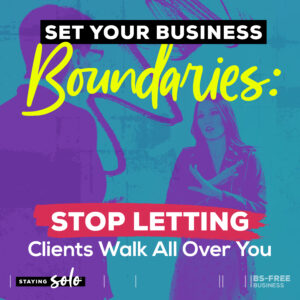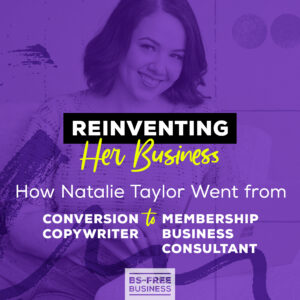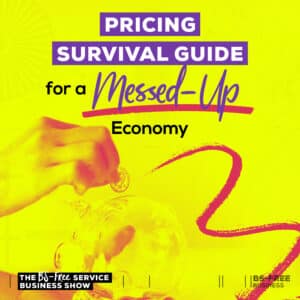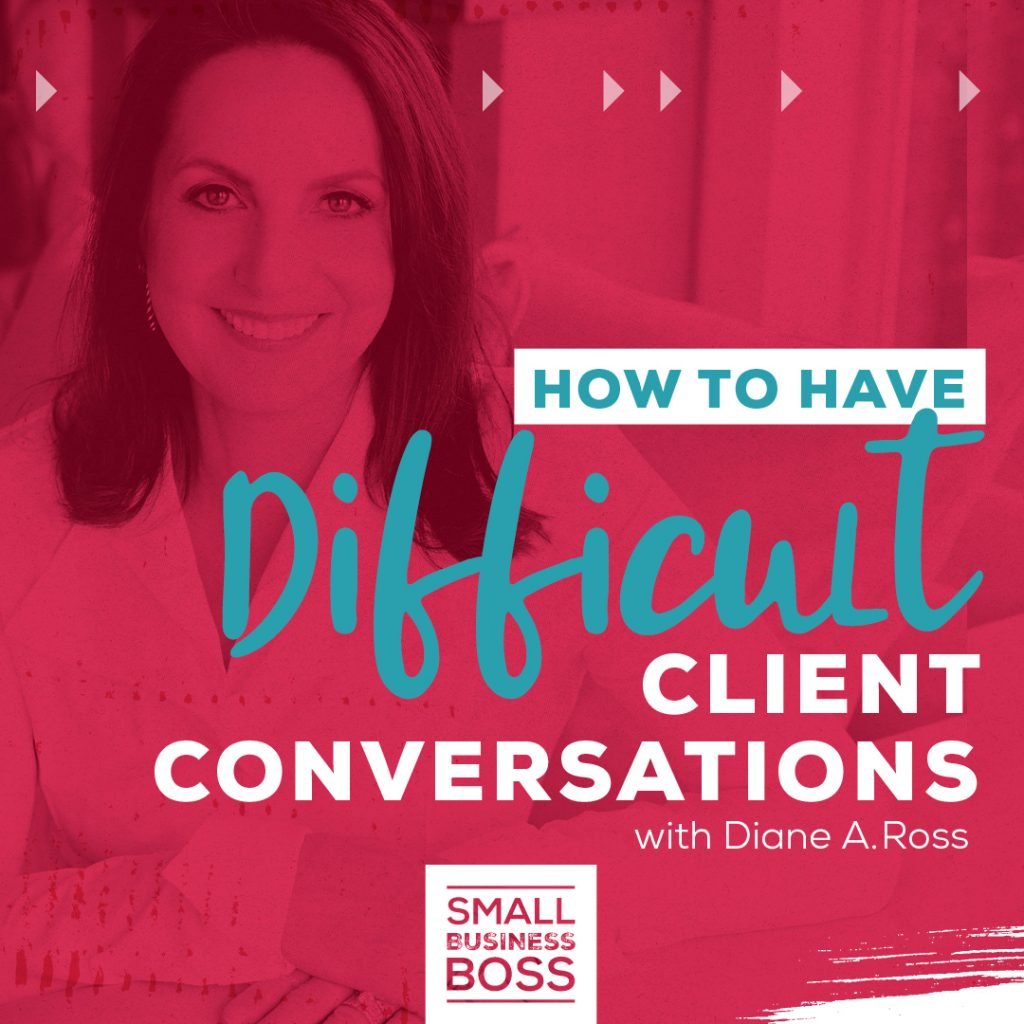
Search the site:
Episode 154: How to Have Difficult Client Conversations with Diane A. Ross
Difficult conversations. They’re unavoidable in business and in life, yet no one really likes to have them. In this episode, we’re diving into how to have difficult conversations, how to set boundaries and say no and so much more with guest Diane A. Ross.
When I think back over my career, there are definitely some moments that really stand out to me. A lot of them involve less than awesome conversations I’ve had to have from firing someone or performance feedback or telling a client a big fat no to something completely unreasonable. All difficult conversations. None of which were fun at all.
Diane A. Ross is going to change how you think about difficult conversations and give you some tools to help make having them a little bit easier.
Table of Contents
Having Elephant Conversations
When I started thinking about this topic, I knew Diane was the perfect guest. When I asked her to go into how she helps people have difficult or “elephant conversations”, this is what she had to say: “I go into organizations and work with teams, team building, and teaching workshops on how to have those difficult conversations. Everything always comes back to conversations and how we communicate about things that are tricky. I also do quite a bit of one-on-one coaching, so that’s kind of digging in really deep with the client, find out what’s holding them back, and coming up with different strategies to really develop their courage to have those conversations to make different decisions. Also, I do some keynote speaking.”
Personally, when it comes to communication skills you’re either hardwired with that skill set and you can kind of fine tune them, or it’s a real challenge for people. I think we just assume everyone’s got this great basis for their communication when that’s not actually the case.
Diane agrees: “Yeah, totally. The magic that happens with one-on-ones is that you can really hone in developing their skills, even with great communicators. There are always certain things that hold them back. Everybody’s got their little things, our fears or whatever they are. So, there’s always that ability to kind of really focus in and fine tune it.”
We need to have lots of difficult conversations — especially when we work with clients in. So, how do we have these conversations?
Diane explains, “I think, as entrepreneurs, one of the biggest fears of having those difficult conversations, at least with your clients, is you might lose them and you might not, they might not come back and they might tell other people, and there’s always that fear whenever you’re in that kind of a service-based business that we don’t know what’s around the corner and whether there’s going to be enough work. I think that sets us up for not having the kinds of conversations that we need to have with clients now. There are other difficult conversations we avoid as well, but I think when it comes to clients, that’s a big, big thing that gets in the way.”
The Ship Is Sinking…and Other Worst-Case Thinking
We tend to conflate the difficult conversation with thinking that they’re going to fire us when, in fact, we can do this quite kindly and gently with a client. I asked Diane her thoughts on this. “Worst case thinking. Catastrophizing. We think they might go on social media and say something negative about us. When it comes to difficult conversations, nobody likes conflict. You don’t get up in the morning and say, ‘Oh, goody, I get to tell a client, no, I can’t move this deadline. You didn’t give me enough time to get this done,’ or ‘No, I can’t do that.’ I mean, nobody wants to do that.
“There’s that conflict that we want to avoid. We’ve all been in a conversation that’s gone sideways, like in a heartbeat, and we’re like, oh, I don’t want to end up in one of those, I don’t want this person to yell at me, I don’t want them to be upset with me, I don’t want to lose it. The other thing is we want to be liked, so we go to these difficult conversations, and one of our big fears is this person isn’t going to like me. So all of that comes into play as well.”
The Wanting to Be Labelled as “Good”
As women, we want to be viewed as “good.” We don’t want to get labeled as abrasive or as being a problem.
I asked Diane’s opinion on this situation. “For your listeners, if somebody labels us being aggressive or being bitchy or whatever it is, it’s like you know what a man might do that would be similar, and wouldn’t be labeled that way and we just have to say forget it, like what you know, that’s about them. That’s their karma. We don’t have to own that, but I think we do kind of sometimes get sucked into that if we’re not assertive, if we don’t talk about these important things, and we don’t have these conversations, we end up feeling way worse because we feel like we’ve been walked over, taken advantage of, and not respected, and all that does is lead to resentment — which is not a healthy or a very functional place.”
Approaching Difficult Conversations
When you own a business, you’re going to have to have tough talks with your clients. If you have a team, you’re going to have to have them from time to time. I asked Diane about some of the best ways to approach these conversations. “If nothing else, the most important thing is when you think, okay, I need to talk about this because if I project forward, or I like to often say, play the movie to the end so to speak and see what happens if I don’t have the conversation.
“The first key is making the decision: I’m going to do it, and I need to do this. If I don’t, the price is too great. Long-term, if you have one team member, for example, who isn’t pulling their weight, that’s impacting every single other person on the team, not to mention you as the entrepreneur, the business owner. And we don’t think about all of that, right? We just think we’ll give them another chance because we want them to like us, and we don’t want to be seen as being difficult and all that stuff.
“So, if your goal is to say to a team member, for example, you know that their work isn’t getting done on time, that they are not meeting deadlines. Your goal is to set really clear expectations about deliverables so that when they get into their excuses and they get into whatever else is going on, you’ll be like, I get it. I hear where you’re coming from, and you need to find a way to meet these deadlines. You know, it has consequences. Maybe you can’t work with a client who’s not getting you the stuff they need to; they’ve got a tight deadline, but then they’re providing you with half the information you need to get something together for them.
“It may be a matter of saying, ‘Until we have all the materials together, we’re not gonna be able to start putting together that proposal, that project, whatever it is.’ The beautiful thing about having the goal is that once you get into the conversation and things get a little tense and start to go sideways, you don’t hit the panic button, you hit the go button. Right? My goal was not to get into whether I’m unreasonable, whether I know their dog was sick. My goal is to make sure I let this person know what the expectations are. If you have that clear in your mind, it’s going to give you so much more confidence to stay the course and adapt to the conversation.”
Leave Your Emotions at the Door
What I really love about this approach is that the information is factual, not emotional. You’re not attacking the person, you’re just being like, “Okay, so this is the way it’s going to have to be, You have to meet the deadline, or we’re not going to be able to meet the deadline.” It’s not about, blaming and getting dramatic and then immediately things blowing up.
Diane concurs, “Exactly right. We’re so good at the blame and judgment. It’s so much easier to say, ‘Well, you didn’t get it to me, and you’re not being fair. How do you think this is for the rest of your teammates when you don’t do your share of the work?’ All of these are dramatic, and it’s the beginning of a huge fight, and it’s the exact thing you want to avoid.
We’ve all been in a conversation that’s getting heated and it’s just going poorly, and we want it to be over. I asked Diane what can we do to try to get it back on track or not let it devolve into a screaming match of wills that’s very dramatic. (I had an incident like that with a coworker years ago, and it is not a proud moment.)
Diane says, “So, you end up in a conversation, and you’re now you’re reacting, right? And you’re getting defensive, and you’re getting angry. Probably in that moment, getting the conversation back on track is not realistic. It’s not realistic because your reptile brain has taken over, and you’ve got cortisol flooding, I’ve heard different variations on the theme, but it can take 15 to 20 minutes to kind of come back down to where you can really be thinking straight. Now, in that heat of the moment, one of the best things you can do when you realize you’re losing grip is to just stop talking as anything that comes out of your mouth might not be good.
“I always like to have an exit strategy, and so it’s just a phrase that you feel comfortable saying. You should practice this, so you’re not practicing in the heat of the moment. This could be along the lines of: ‘I think we need to take a break and read circle back to this when we’re both in a better frame of mind,’ or ‘You know what, I’m going to step away. I’m happy to talk about this later once I feel like I can really address the issues. Right now, I’m feeling really triggered.’ There’s nothing wrong with having a little bit of that transparency now. Some people — especially in interpersonal relationships — might be like, ‘Oh no, we’re talking about this right now.’”
“You have to be really firm: ‘You know what? I need to end this conversation now. I don’t want to end up saying something that I regret.’ I want to be able to be productive. I love the idea of an exit strategy because I think there are so many times we’re trapped in that corner. How do we get out of thinking that you can think your way out of it at that moment? It’s just unrealistic as nobody’s going to hear anything because our emotions have gotten too high. It happens, right? And that’s why you have the exit strategy so you can circle back.
‘You’re not doing it to one-up people; you’re doing it because you want to have a more productive conversation. Like there are lots of good reasons to do it, but it also shows a ton of confidence, and it’s really standing your ground. It’s a boundary in many ways.”
Setting and Keeping Boundaries
Boundaries are such a big struggle — whether it’s personally or professionally. So how do we learn? I think so much of this comes down to learning how to say no. I asked Diane her input on how we learn to say no in a way that’s a definitive answer.
“I used to find it so upsetting when people would say you need boundaries. I would tell people, ‘Here’s my boundary,’ and they would cross it and I’d be super mad and super resentful. I think the key is having the confidence to say no to something. So saying no to a client for example, or saying no to your mother about something she wants you to do. Know what you’re going to do and what your plan is. If that person crosses that boundary, then that gives you the confidence that when you say no, you can say it like you mean it. I’m not talking about aggressive, but if people hear hesitation in your voice, if they suspect that there’s any chance to warm in there, then they’re going to take advantage of it. If you are now holding boundaries with somebody that you haven’t held boundaries with in the past, they are going to push back like you would not believe.
“Like with your kids, it’s like, yeah, you’re welcome to borrow the car when you get the dishes done and then they start freaking out because they’re going to miss meeting their friends. If you cave and let them take the car, you’ve taught them to treat you that way. With your clients, decide that you’re not going to do the work until everything comes to you or you’re not going to do these short deadlines. You’ve told them that, they know that so now. They have a choice and that’s where you — I think this is the key — are really being clear about what you’re going to do if and when somebody tries to cross that boundary. So, if it’s the way they’re speaking to you, it may be getting off the phone, walking out of the room.
“I’m taking back my power. And that’s one thing. One of my favorite thought leaders is Brene Brown, and I love what she says about boundaries. Her mantra is something along the lines of, (I hope I get this right). ‘I will choose short term discomfort over resentment because it’s discomfort for that very short time.’ It’s that discomfort in that awkward moment where you say, ‘No, I can’t do that.’ ‘No, I can’t sit on the committee now.’ ‘I can’t go up and pick up that thing for you today.’ ‘No, I’m not able to squeeze that extra thing in.’”
Avoiding Explanation Overload
I often notice that people want to explain everything as to why they’re doing it. I know for me this took years for me to unlearn, so I wanted to get Diane’s insights into why we want to overexplain everything?
Diane observes, “I think we overexplain because we don’t want the other person to be ticked off at us. We don’t want them to think that they were being unreasonable. We think somehow telling them all the reasons that somehow they’re going to accept it that they’re going to be, ‘Oh, that’s fantastic. Thank you so much. I’m so glad you’re not going to do that for me today.’ This is not going to happen. It’s our intuition that if I explain it, and it’ll be easy for them to accept it. This is actually completely off-base because it doesn’t work that way. So, if you think about people you respect in your life, you know what their boundaries are. They’re really clear. Really, at the end of the day, it’s actually much, it’s much better for your relationships.”
When it comes to working with clients, we don’t hold good boundaries with clients from the beginning, so then we get upset or resentful or annoyed because the client’s breaching them. I wanted to get Diane’s input on re-establishing healthy boundaries with our clients.
Diane’s offers this input: “Transparency is always the best. By saying, “I need to be able to keep running this business and be able to deliver for all of my clients. I’m needing to put into place some structure, and here’s what it is.’ Then you let your clients know that and how you’re going to work going forward. Again, going back, taking all the emotion out of it and being really clear and factual. Let people know that this is what you’re doing, and here are some of the new rules of the game, so to speak.”
Put the Focus Back on Being of Service to the Client
In my experience, one way to get boundaries back on track is by really putting the focus back on the client. To your client, you’re saying “Hey, I’m establishing things so I can better serve you as my client” versus “Here’s all the things we’re doing wrong.” The truth is that sometimes, our boundaries are squishy or soft, but ultimately, great clients — the kind of clients we want to work with— are going to be much, much more respectful because they know we’re a professional.
Diane agrees, “Totally. And I think there may be times, obviously, that we make exceptions. Maybe it’s a long term client and something’s gone on. We’re like, hey, we can chip in here and do this. The key is that you know that you don’t have strong enough boundaries if you are having those little resentment loop conversations with yourself. It’s like, this is not healthy for me, and it’s actually not healthy for the relationship. That would not be a sustainable, healthy working relationship.
Summary: Three Lessons on Difficult Client Conversations
- Watch for the worst case scenario thinking with clients. As Diane pointed out, so many times we avoid a conversation we need to have with a client as we’re worried it’s going to result in them terminating our relationship. Rarely is that ever going to be the case, so we need to put things in perspective so we’re not terrified to have the conversations we need to have.
- Consider the short-term vs. the long-term. Think about the full movie and the ending. If not dealing with it is going to be painful, it’s worth that short-term discomfort. You need to decide if you’re willing to have the conversation, and then you need to set a goal for your conversation and what you want to happen from that exchange.
- Have an exit strategy. You’re human so, sometimes, things aren’t going to go exactly as planned. You need to determine your exit strategy well in advance of sitting down for a chat. Have a key phrase you can use to extricate yourself if needed. In the same vein, when saying no, have a plan for what happens if that no isn’t respected. What will the consequence be, and be ready to follow-through on it. That will give you the power to say no with confidence.
Links for the Show:
About Diane
Diane A. Ross is an executive coach, leadership mentor, and difficult conversations expert who teaches people around the world how to have the courage to tackle difficult conversations with confidence, poise, and power. A former litigation lawyer turned author and professional speaker, Diane brings a combination of real talk, skill development, and her signature no-nonsense approach to getting the job done no matter how difficult the situation may be. She’s a Certified Executive Coach and trained in Advanced Negotiation and Mediation at Harvard Law School.
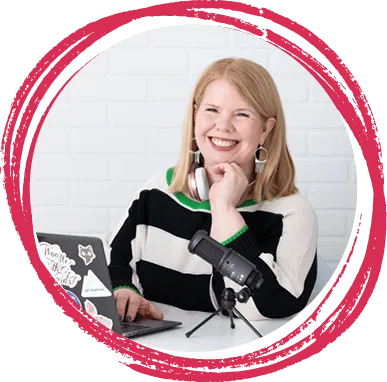
I’m Maggie Patterson (she/her), and services businesses are my business.
I have 20+ years of experience with client services, am a consultant for agency owners, creatives, and consultants, and vocal advocate for humane business practices rooted in empathy, respect, and trust.
Read or Listen to the Latest
For Solo Business Owners
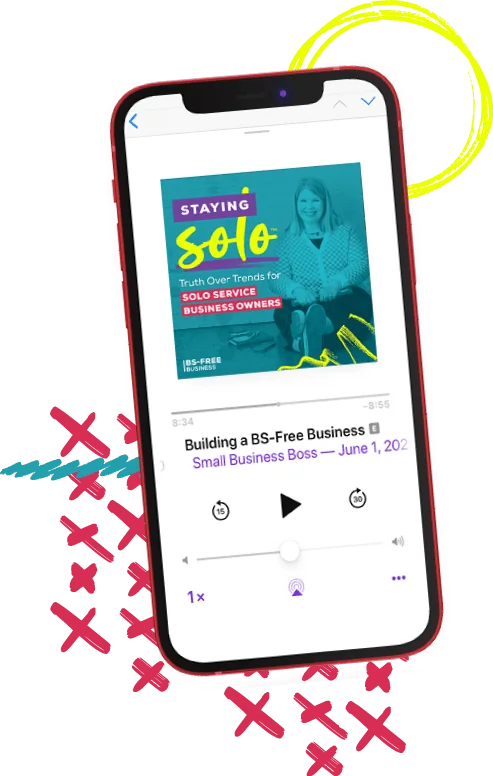
Growing a solo service business is tough.
It’s even harder when you’re bombarded with BS advice that steers you away from your values and why you started your business in the first place.
This is the podcast for solo creatives and consultants who want to remain as a team of one and have zero interest in the hustle and grind of typical business teachings.
Subscribe now and never miss an episode.
For Micro Agency Owners
Most podcasts for agency owners obsess over revenue growth as the ultimate success metric.
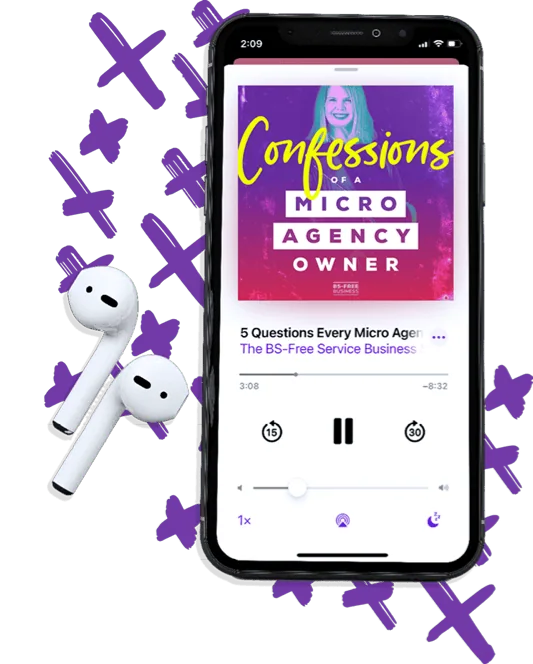
But here’s the truth: not everyone wants to make millions. Your goal might be to build a sustainable business that lets you have a life and doesn’t run you into the ground.
Join me as I spill my shameless confessions and share everything I’ve learned about building a micro agency that skips the BS of tired and typical agency teachings.
Follow Now on All Major Podcast Platforms
